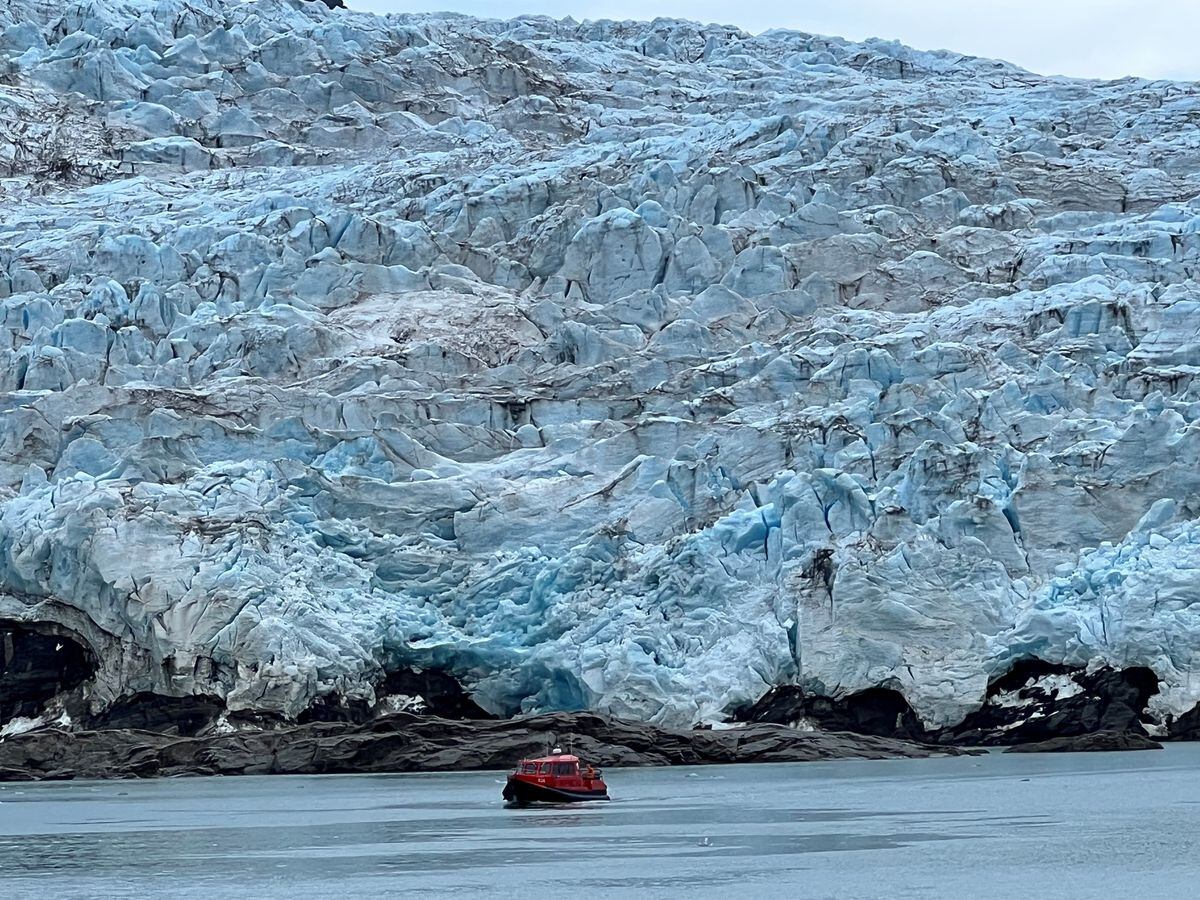Thawing permafrost soils endanger infrastructure
Created: 01/12/2022, 07:30 AM
As the permafrost soil thaws, the sea is increasingly eroding the land in the Eskimo village of Shishmaref, located on an island in northern Alaska.
© SBCGlobal / dpa
Global warming thaws ice in the permafrost soil.
This causes greenhouse gases to escape and further warm the earth.
Researchers also expect high damage because houses and streets are damaged.
Oulu - Climate change is causing the permanently frozen ground in northern regions and some mountains to thaw faster and faster.
30 to 50 percent of the buildings and infrastructure facilities in these areas are therefore threatened by damage of various degrees of severity by 2050.
This is the result of the review article by an international research group headed by Jan Hjort from the University of Oulu (Finland) in the journal "Nature Reviews Earth & Environment".
Part of the damage could occur in Russian areas where the natural gas used in Germany and other European countries is produced.
In many areas far to the north, the water in the ground is in the form of ice.
In summer the upper one to two meters partially thaw and freeze again in winter.
Global warming means that large parts of the permafrost soil are thawing ever deeper.
Because the ice gives the ground additional support, the thawing ground becomes increasingly unstable - depending on the type of ground and the amount of ice it contains - subsidence and landslides occur.
Russia particularly affected
About 65 percent of the Russian territory currently has permafrost soils; Russia is therefore particularly affected by the thawing of the ground ice. "At the beginning of the 21st century, many buildings exhibit permafrost deformations, from around ten percent of the buildings in Yakutsk and Norilsk to 80 percent of the buildings in Vorkuta," the scientists write. Many roads, railways, airstrips and pipelines are also affected by damage. This also applies to Canada, Alaska and Greenland, as well as the Tibetan Plateau.
The researchers write that around seven billion US dollars would have to be raised between 2020 and 2050 just to repair the damage caused to the existing road network in Russia by the thawing permafrost soil.
An additional 200 to 500 million US dollars would be added annually to achieve the goals of the Russian transport strategy.
Housing replacements would require an additional $ 500 to $ 600 million per year.
New technical processes
However, Hjort's team also reports on various technical measures with which damage to roads can be reduced or even avoided.
Some methods aim to dissipate heat from the subsoil, for example with loose rock fillings, in which a natural air cycle is created that promotes warmer air upwards.
Thermosiphons, heat drains and very flat side strips also have a similar effect.
Other measures reduce heat absorption in summer, such as a higher road surface or its insulation, sun protection for the side areas or a highly reflective asphalt surface.
However, all of this costs more than the usual construction methods.
more on the subject
NATO expansion to the east: Putin threatens the West
Even Temelin plans are shaky - Why the Czech Republic suffers particularly from a lack of water
Drought and floods - extreme weather hits Africans hard
The thawing permafrost soil is in the focus of scientists for various reasons.
The frozen ground stores a lot of carbon, some of which is released into the atmosphere in the form of the greenhouse gases carbon dioxide (CO2) and methane (CH4).
Numerous pollutants could also be released in the coming decades, as was recently shown in a study in the specialist magazine "Nature Climate Change".
Because toxic or radioactive waste has contaminated the soil in some regions, which was previously unproblematic because of the permafrost.
Even ancient bacteria, some of which are resistant to antibiotics, can be brought back to life by thawing, as a few incidents have already shown.
dpa









